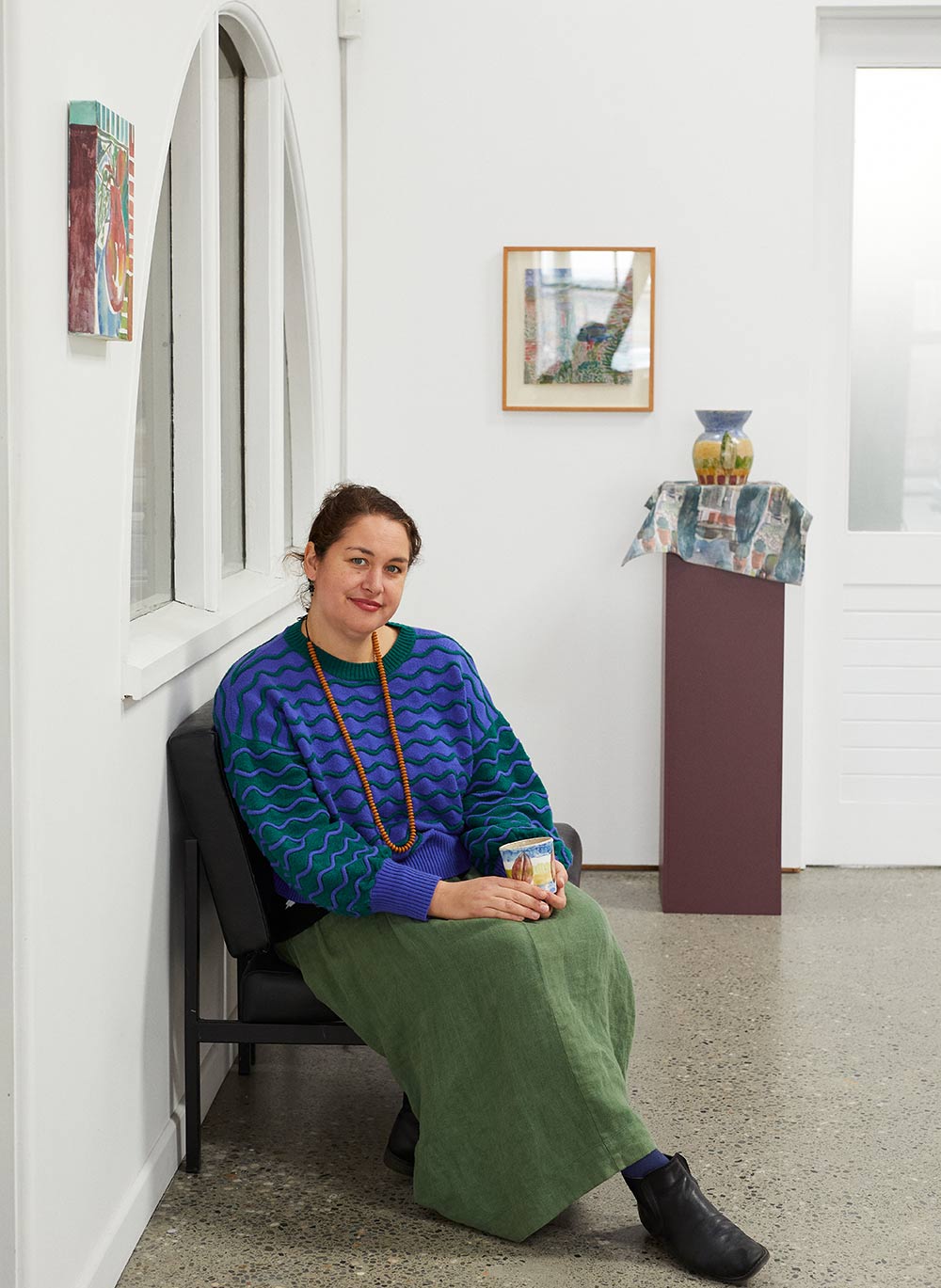

Art history in the making
Meet Florence Weir, a textile artist cut out of whole cloth.
By Theo Macdonald
Artist-designer Florence Weir was born in Ōtautahi Christchurch at the pointy end of the 1800s and spent most of her life in London. Yet, even as her joyfully patterned paintings, ceramics and textile artworks were praised abroad, Weir never relinquished the allure of home. Like an art- historical Forrest Gump, she sails through 20th- century modernism, from attending gatherings of The Group — a renowned Christchurch art collective — to studying with the striving malcontents at Germany’s Bauhaus.
Now, on the 125th anniversary of her birth, Florence Weir is primed to take her rightful place in the pantheon of great New Zealand expatriates, alongside Katherine Mansfield, Frances Hodgkins and Len Lye. However, in the words of Columbo, there’s “just one more thing”.
Florence Weir is a construction.
Florence Weir is the invention of artists Julia Holderness and Richard Orjis — real people, I swear — who created her for a joint exhibition in 2015. With Orjis’ blessing, Holderness spiralled off their fabrication into a series of installation artworks and a doctoral project at AUT University.
Holderness describes Weir as her “lens, cypher, nom de plume and alter ego.” The character, Holderness tells North & South, is a vessel for her to tease out questions about cultural exchange and influence, the social lives of female artists, and the artificiality of art-historical storytelling. Travelling abroad freed women artists in the early 20th century from the conventional boundaries of feminine identity in their home country, and “Florence Weir embodies New Zealand culture’s preoccupations with transiency and belonging.”
Like Weir, Julia Holderness was also born in Ōtautahi — once the art capital of Aotearoa — where she currently lives with her partner and children. She grew up in an Arts and Crafts style house in a city teeming with the urban structures of architects Miles Warren and Maurice Mahoney, and remembers her aunt telling tales about attending exhibitions by The Group with her mother — Julia’s grandmother — who attended Ilam art school in the 1930s.
This winter, Holderness’ work in three distinct exhibitions in Auckland and Christchurch investigates different art historical moments. The solo exhibition Return to Villa Margaux, at The National in Christchurch, explores aesthetic histories in the Mediterranean through the fantasy of an artist residence near Menton in the South of France. Botanical Pursuits, also solo, at Auckland’s Sanderson Contemporary, explores the garden as a social and creative site for women in the early to mid 20th century. And, as part of Modern Women: Flight of Time at Auckland Art Gallery Toi o Tāmaki, a set of archival vitrines catalogue imagined relationships between Weir and her hypothetical contemporaries in New Zealand.
